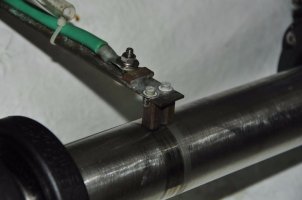There are whole books written on this subject, which I have not fully digested, so don't assume this is definitive...
I generally figure that if hooking up the chassis ground to the DC negative were OK, they would have done so inside the box. RF ground should go to your boats bonding system - the network of wires, or preferably flat copper ribbon (RF travels along the outside of a conductor, not the middle), that connect the through-hulls and such together and by definition are at zero volts with respect to sea water. Otherwise, RF noise would feed back into everything else connected to your power supply.
Somewhere, I have a recording of what that sounds like... you can hear all the NMEA data sentences pinging around when you're trying to listen to the SSB radio

. The subwoofer for the stereo picks up and amplifies every bit of noise.


And you can hear some of it when you turn down the squelch on the VHF

.
Sure, the device would probably "work" most of the time if you hooked it up that way, but it's a heck of a lot easier to hook it up right the first time than it is to try to track down a problem connection later.

